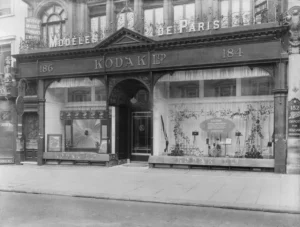Why Kodak is facing shutdown: What you need to know

Kodak warns of shutdown amid debt crisis
Eastman Kodak, a name that once defined photography, has issued a dire warning, acknowledging “substantial doubt” about its ability to continue as a going concern. In its recent SEC filing, the company disclosed that nearly $500 million in debt is due within 12 months, and it lacks committed financing or adequate liquidity to cover these obligations.
To preserve cash, Kodak has suspended contributions to its retirement pension plan, an aggressive move to free up funds for debt servicing. The announcement triggered a sharp stock plunge, roughly 25–26% in intraday trading.
Despite the collapse of its financial footing, Kodak maintains a degree of optimism, stating it may pay down a meaningful portion of its term loans and seek to refinance or amend remaining debt. However, these strategies aren’t guaranteed, especially under U.S. accounting rules, hence the stark “going concern” language.
A Storied Legacy: From Brownie to Bankruptcy
Kodak’s roots date back to 1879, with its name embedded in cultural memory, “You push the button, we do the rest.” The Brownie camera, introduced in 1900, made photography accessible to the masses and cemented Kodak’s reputation for innovation and simplicity.

At its zenith in the 1970s, Kodak commanded an estimated 90% of U.S. film sales and 85% of camera sales, becoming synonymous with photography itself. However, the company’s reluctance to fully embrace digital technology, even after inventing the first digital camera in 1975, proved costly.

Competition from smartphone photography and rivals like Canon rendered Kodak’s core business obsolete, leading to its first bankruptcy filing in 2012, with $6.75 billion in debt. Post-bankruptcy, Kodak pivoted toward commercial printing, specialty chemicals, and even pharmaceuticals, but growth has remained elusive.
READ ALSO
Kentucky Whiskey Industry Bankruptcy: What it means for consumers
Corporation for Public Broadcasting to shut down – here’s why and what it means for viewers
What’s Next? Legacy, Lessons, and Kodak’s Future
Kodak’s survival, or lack thereof, is more than just a business story; it’s a cautionary tale for industries facing rapid technological disruption, AI’s current wave being a modern parallel.
For investors, employees, and photography enthusiasts, the fate of Kodak raises important questions about corporate adaptability, brand legacy, and the fate of retirement benefits as Kodak moves to reclaim pension funds, an emotional flashpoint especially for former employees.
Should Kodak cease operations, it would mark the definitive end of an icon that defined photography for over a century. Yet if it survives, it will be as a different entity, one stripped of its legacy consumer identity, focused on industrial B2B operations, and fighting to stay relevant.

